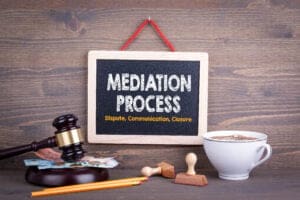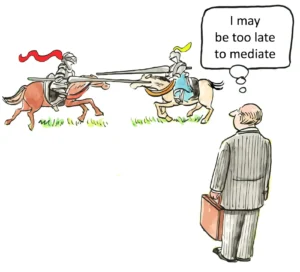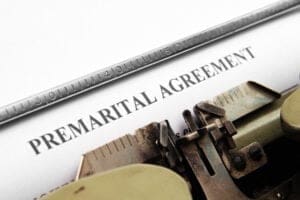Can You Apply for Another Visa While on Bridging Visa E?
One of the complex moving parts of the Australian immigration system is the Bridging Visa E or BVE. BVEs are usually granted to people who have overstayed their time in Australia, those who have become unlawful, or those who need more time in the country to process their immigration status. A BVE is a visa that allows someone to remain lawfully in Australia while ongoing processing.
Although it allows a visitor to stay for an extended time, it comes with strict conditions. One condition is visitors aren’t allowed to seek employment or work. Visitors also have a limited time to legally stay in the country while on a BVE. Understandably, many people holding this visa wonder whether they can apply for another type of visa to secure more stable rights and a clearer pathway to the future.
Why People Want to Apply for Another Visa
Uncertainty is part of the worry for a lot of people who are on a Bridging Visa E. People who want to work and live in Australia want a chance to start over and build a permanent life there. For those who want help navigating this tough process, some of the most reliable migration lawyers Sydney has to offer might help.
Being on a BVE makes it difficult for them to gain employment or start working. A lack of secure work rights can make it difficult to support oneself or one’s family, creating financial stress. Others are unable to travel overseas to visit loved ones, since leaving Australia usually cancels the BVE.
Aside from the personal challenges, physical and mental stress is also present. Living with the possibility of removal from the country, or having to wait for a long time for applications to finish processing, often forces others to find another visa option. Applying for a different visa represents the hope of moving from a temporary and restrictive situation toward something more stable and long-term.
The Possibility of Applying for Another Visa
Although the law can provide several pathways for people on a BVE to apply for a new visa, the opportunities are very limited. A person on a BVE can’t simply jump any visa category as they please. Student visas, a skilled migration visa, or most temporary visas aren’t options for those on a BVE, especially if they have been unlawful in the past.
Instead, the ability to apply for another visa depends on restrictions that recognize a handful of exceptions. More importantly, the Department of Home Affairs applies these rules strictly. Applicants should provide compelling reasons and evidence to show that they’re qualified. This makes the process more complicated than applying from a lawful status or from overseas.
Common Pathways People Explore
Those on a Bridging Visa E can opt for protection visas or a partner visa.
Protection visas are for people who are being persecuted in their country and have a fear of reprisal should they come back home. However, going this route requires the individual to have strong evidence and personal testimony that goes in accordance with Australia’s refugee and complementary protection laws. Although this isn’t the ideal route for everyone, those who are qualified are presented with a new, life-changing start in Australia.
Another option for those on a BVE is the partner visa. Partner visas are available to people who have a genuine relationship with an Australian citizen or permanent resident. Easy as it sounds, applicants however, should meet the Schedule 3 requirements.
Schedule 3 requirements are additional legal hurdles that prevent people from easily and unlawfully transitioning into another visa category. To pass Schedule 3 requirements, applicants must show compelling and compassionate evidence that explain why they should still be granted the visa. This might involve them showing evidence of a long-term committed relationship, strong ties to Australia, or hardship that would result from being forced to leave.
Living with Restrictions on a Bridging Visa E
For people on a Bridging Visa E, it’s not just about waiting for a simple decision from immigration; it’s about having real-life consequences. Work rights are often limited or unavailable. Although some can apply for permission to work, they have to prove financial hardship or other special circumstances. This puts many people in a precarious situation where they might have difficulty or trouble staying afloat financially.
Travel is another major restriction. In most cases, leaving Australia while on a BVE will result in the visa being cancelled. Whenever a family emergency or important matter arises, the applicant is left with a terrible choice: to stay and wait for a visa that may or not be approved or to go home and void the current visa they have. For those who stay, looming problems just add to the pressure of waiting for a visa.
These limitations are what makes life on a BVE so difficult. They also explain why many people look for other visa options, despite the obstacles involved.
Risks, Alternatives, and the Role of Good Preparation
Many are often swayed into applying for another visa right away. Good as it sounds, it’s important to know that there are risks involved with it. Having an application refused isn’t just a simple decision. The applicant may become unlawful, or their BVE could end. Additionally, a history of recurring refusals virtually make future applications even harder.
A more realistic alternative for some is to leave Australia and apply offshore. However, this also comes with its own set of challenges. In some cases, individuals can get ministerial intervention. A ministerial intervention happens when the Minister for Immigration uses their discretion to grant a visa based on humanitarian or compassionate grounds. However, this option is not guaranteed and is used sparingly.
Being prepared can make a big impact on improving chances of success. This may include:
- Collecting and presenting strong, verifiable evidence of relationships, hardship, or protection needs.
- Showing genuine ties to Australia. This might require the applicant to show a strong involvement with a community or family responsibilities. You might also want some of the most trustworthy conveyancers Brisbane has, to help you with properties that are listed under your family’s name.
- Seeking professional legal or migration advice to ensure applications meet all technical requirements.
Taking these steps does not guarantee approval, but it strengthens the case and shows the applicant is serious about complying with the system.
Conclusion
Applying for another visa while on a Bridging Visa E isn’t an impossible task, but it’s restricted, with protection and partner visas being the main options. Both require strong evidence, and partner visas often involve strict Schedule 3 conditions. Given the limited work rights, lack of travel, and risks of refusal, success depends on careful preparation, compelling circumstances, and often professional guidance.
Author Bio

Emmanuel Fornillos is a content writer and outreach specialist at Justice Network. He focuses on creating helpful resources about migration, study abroad, and legal topics, while building connections through guest posting and digital outreach.













